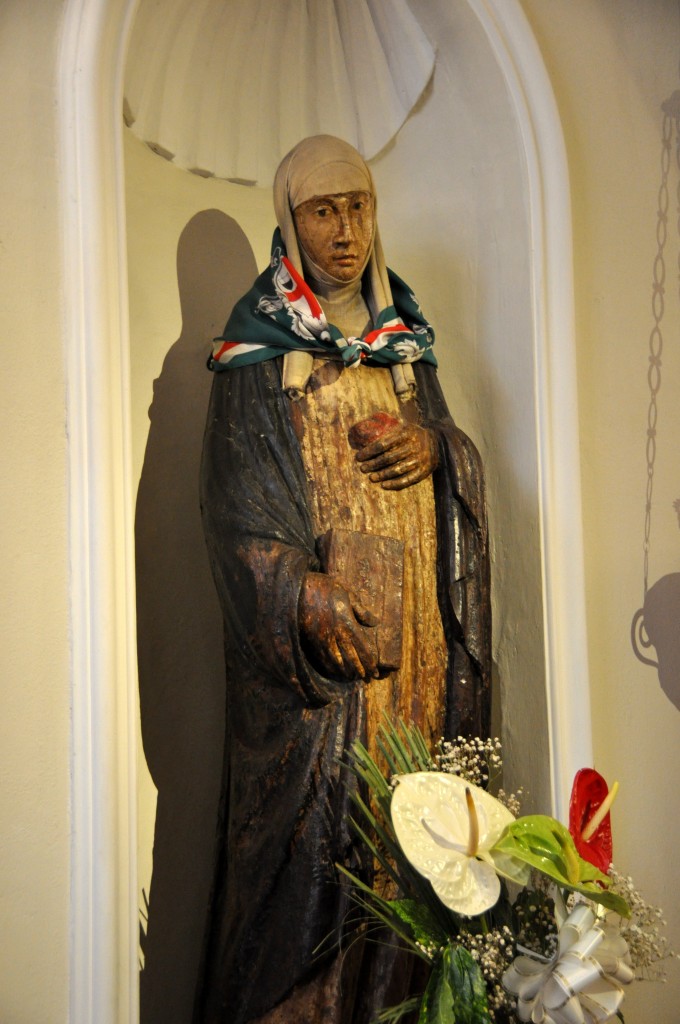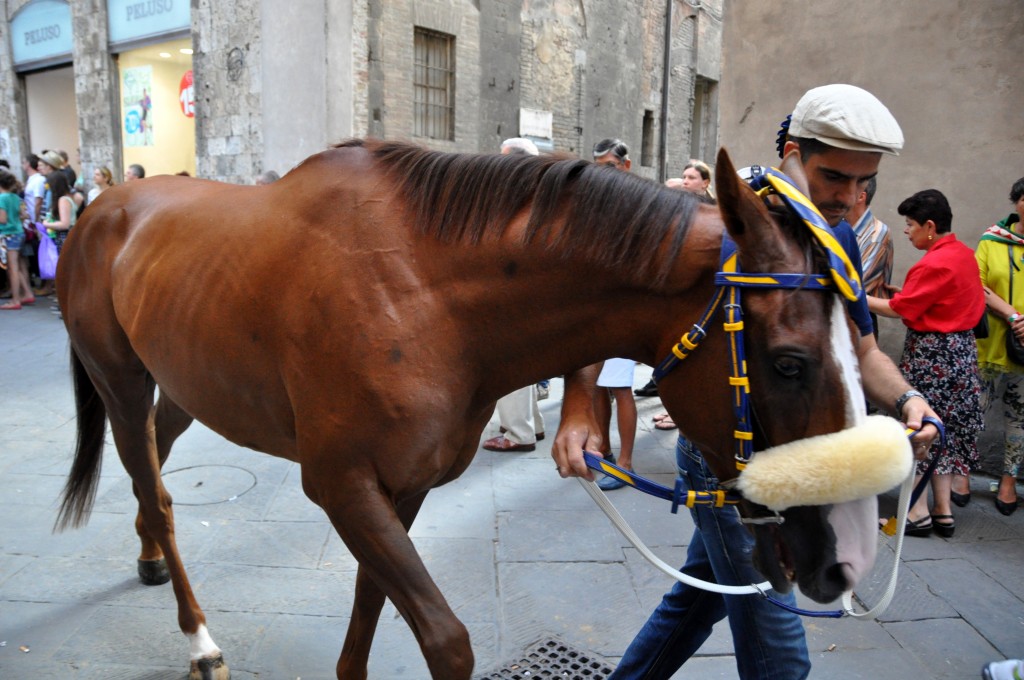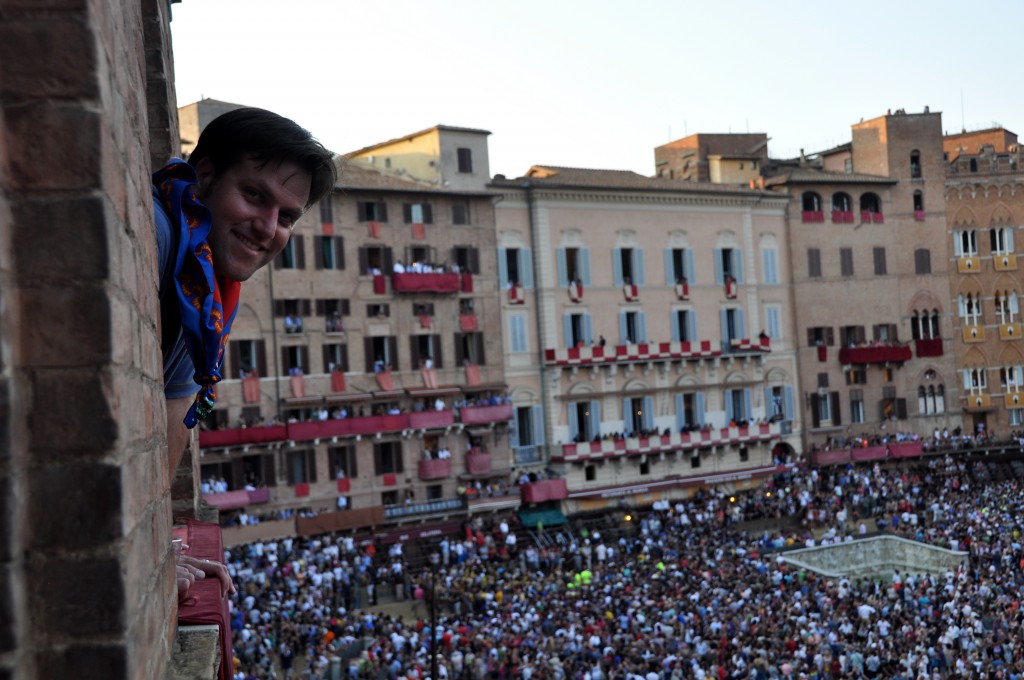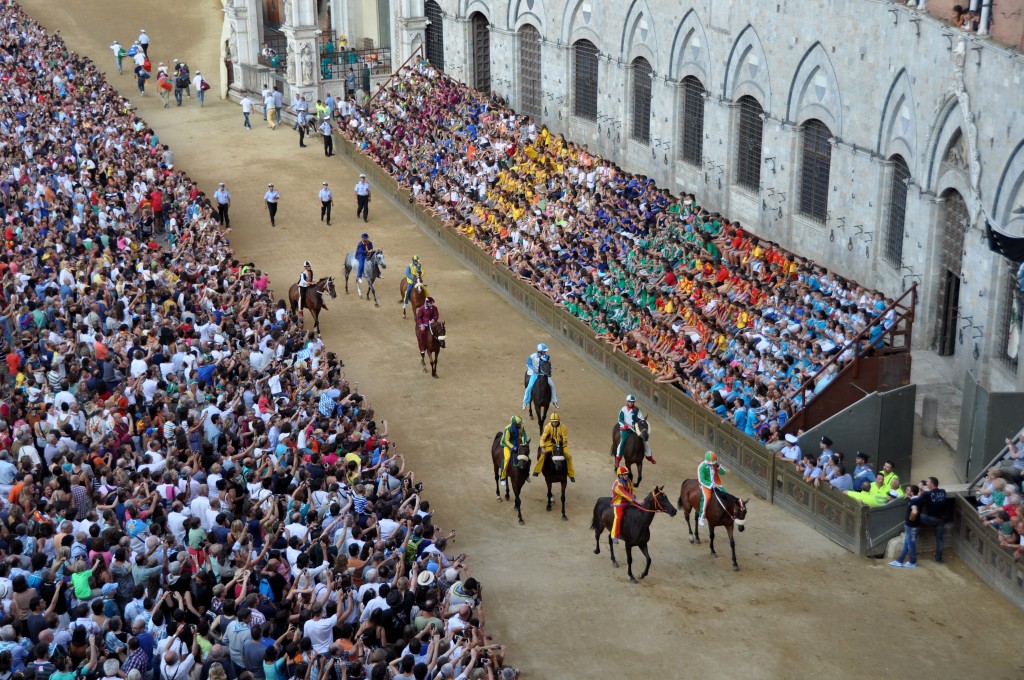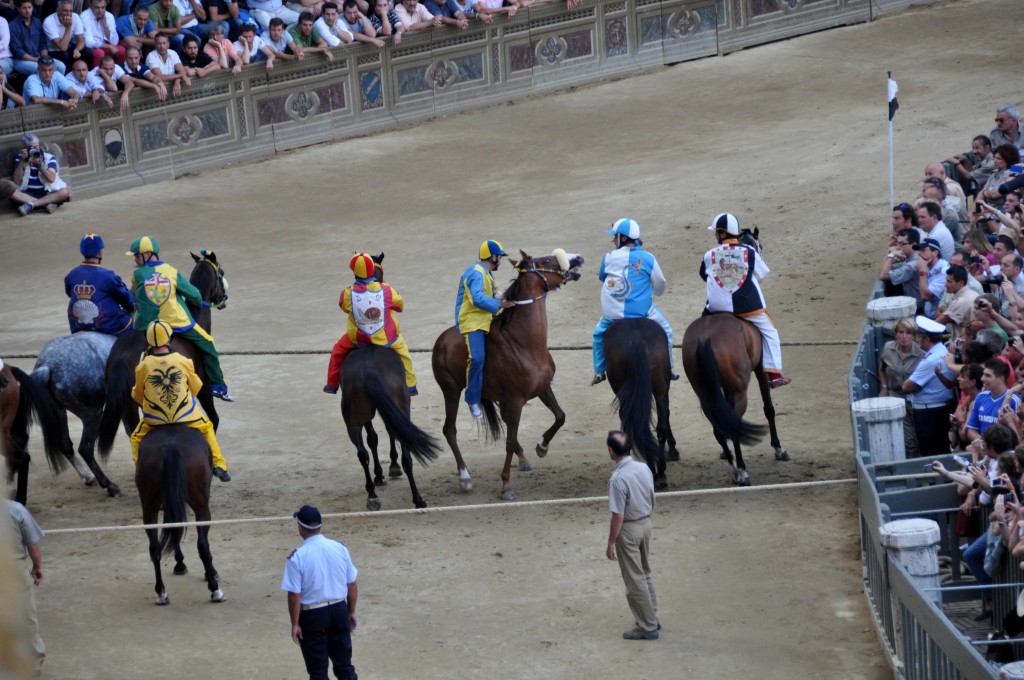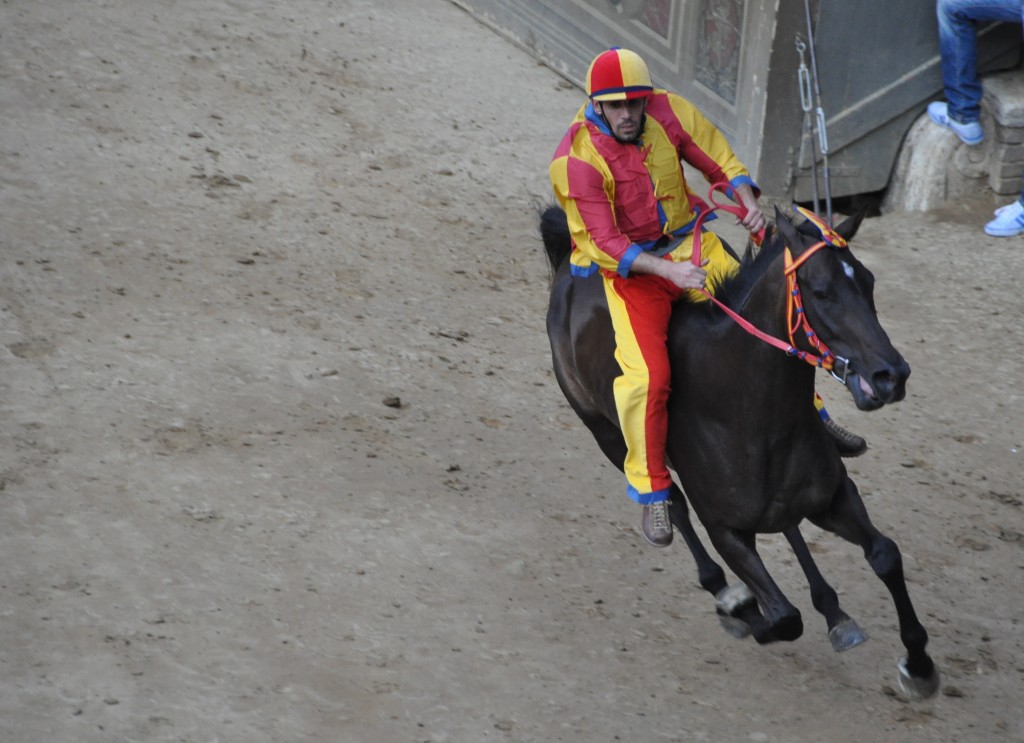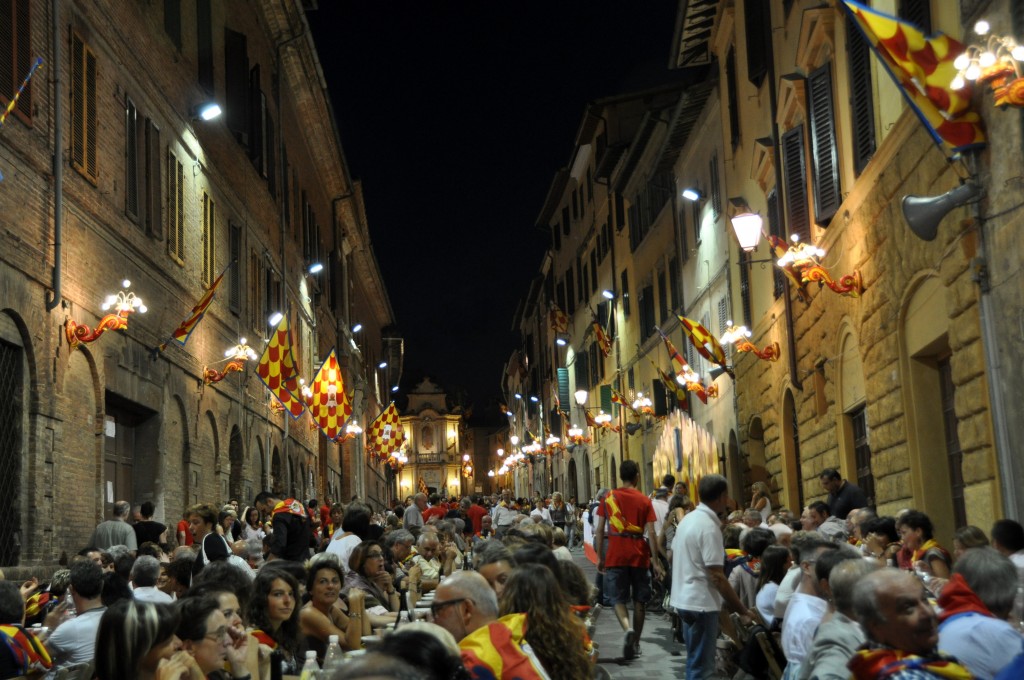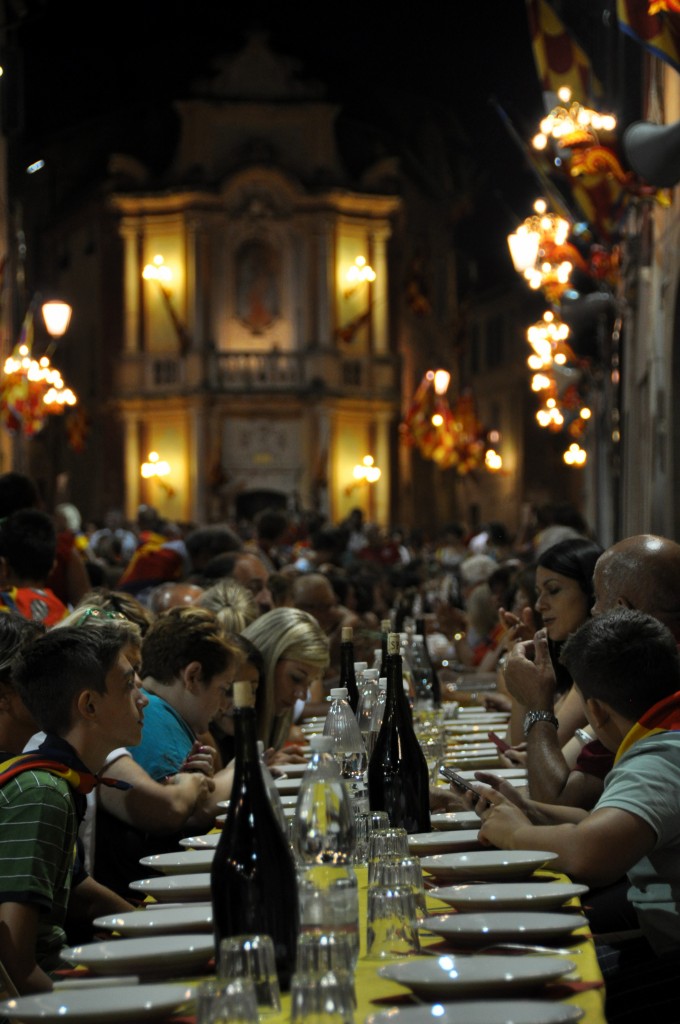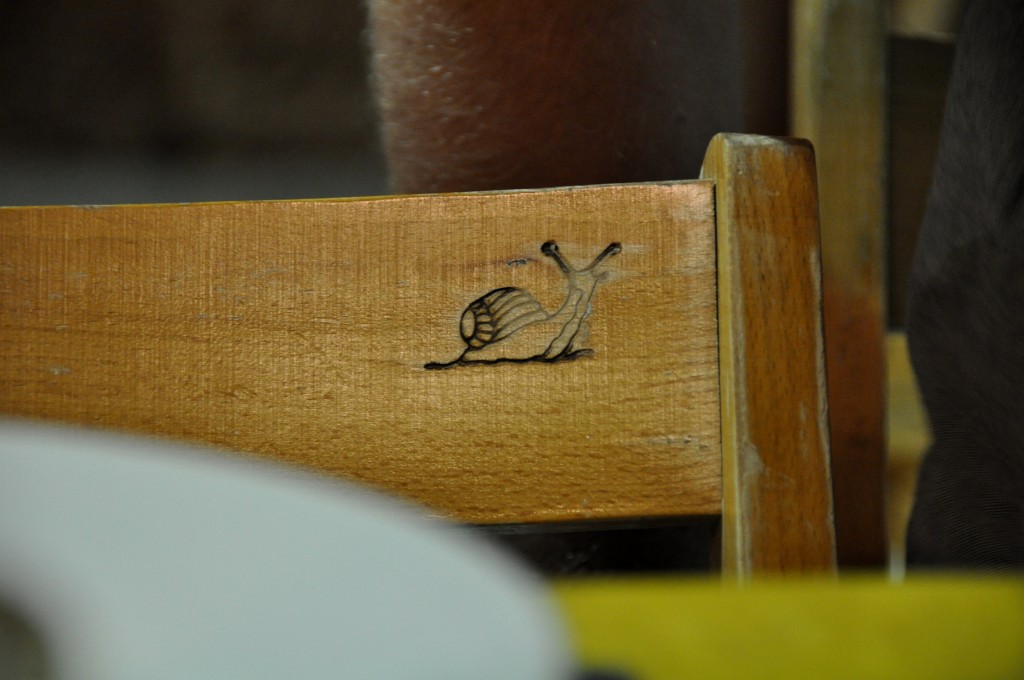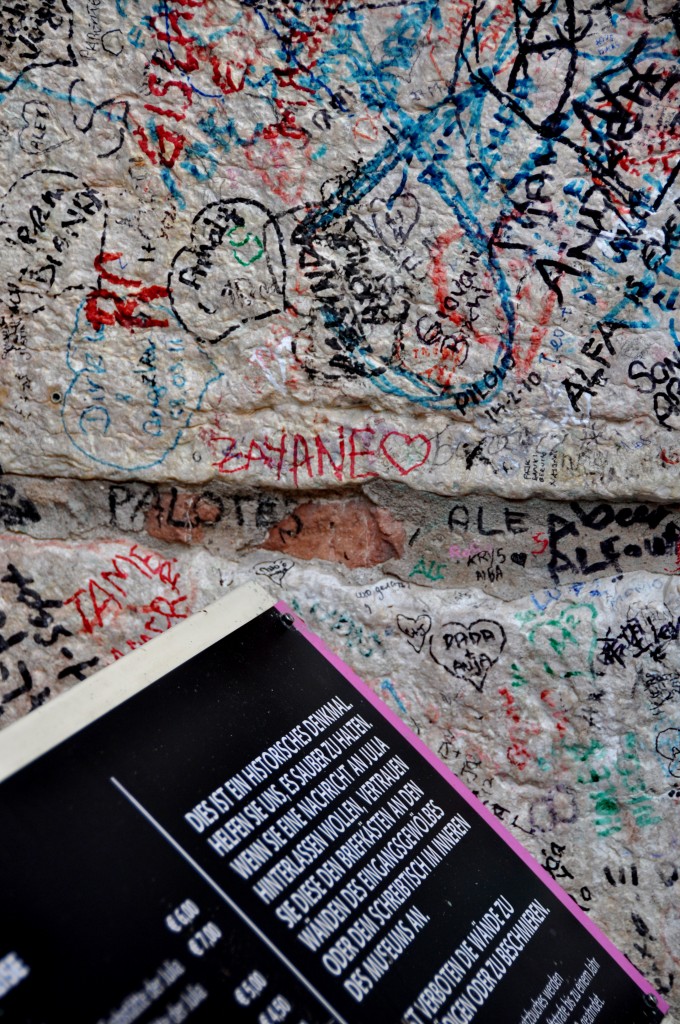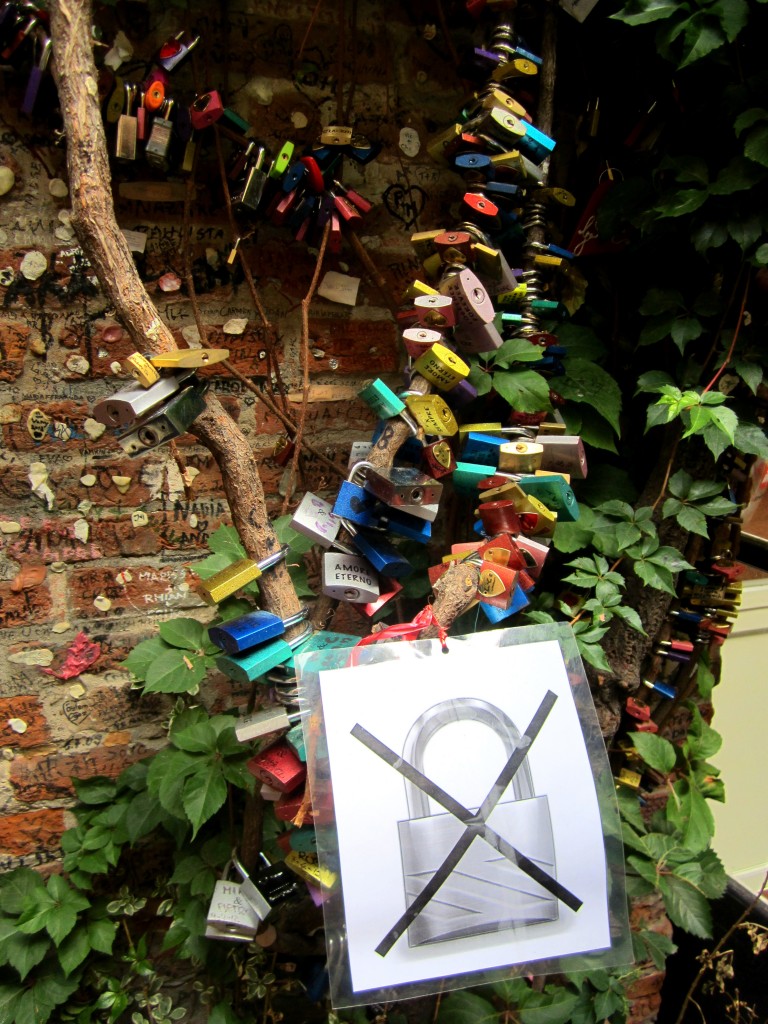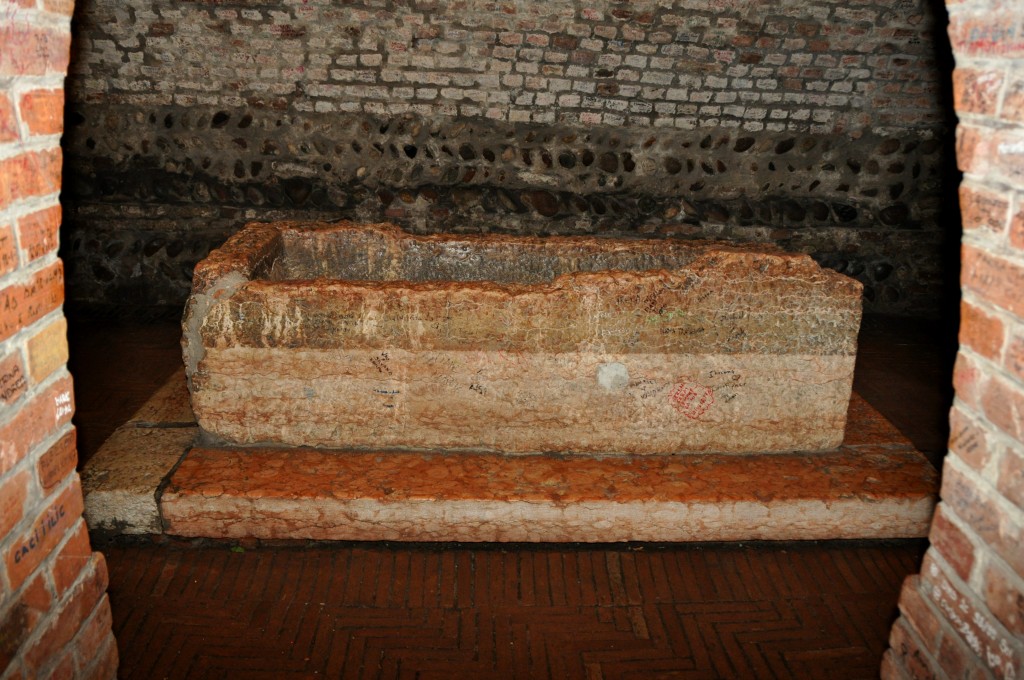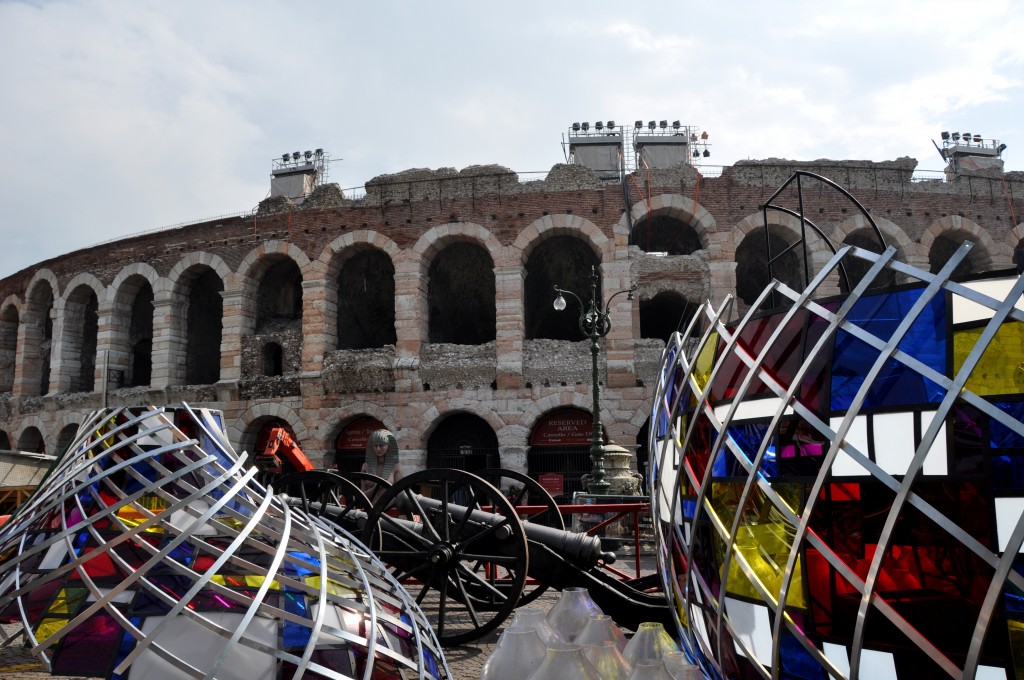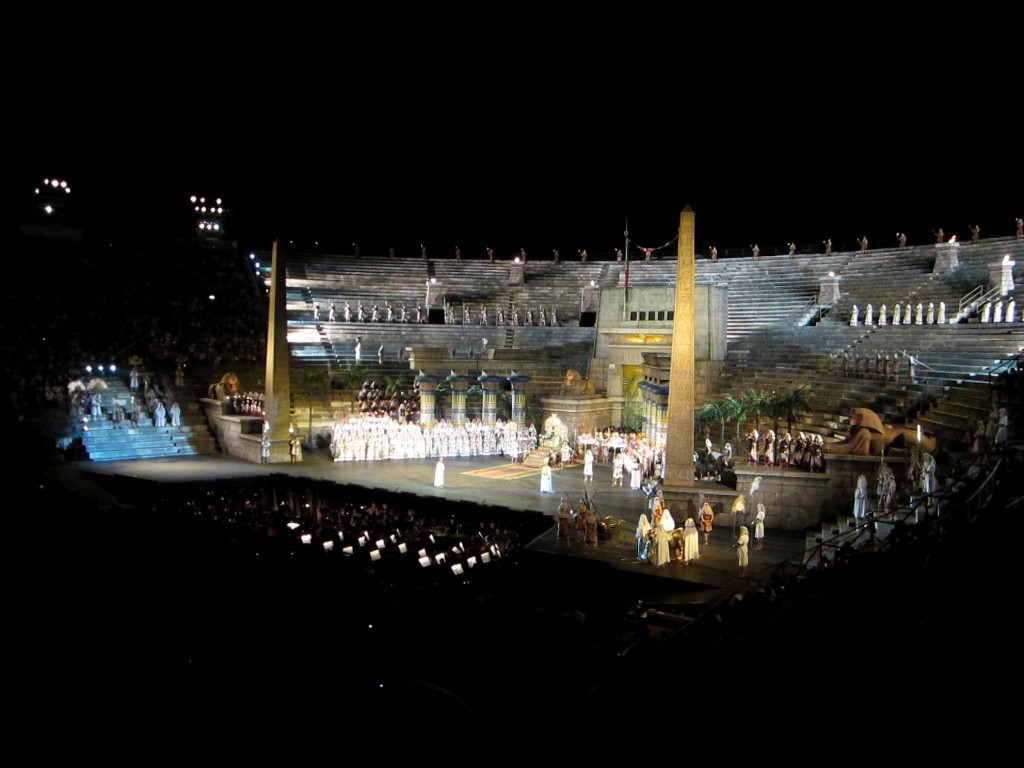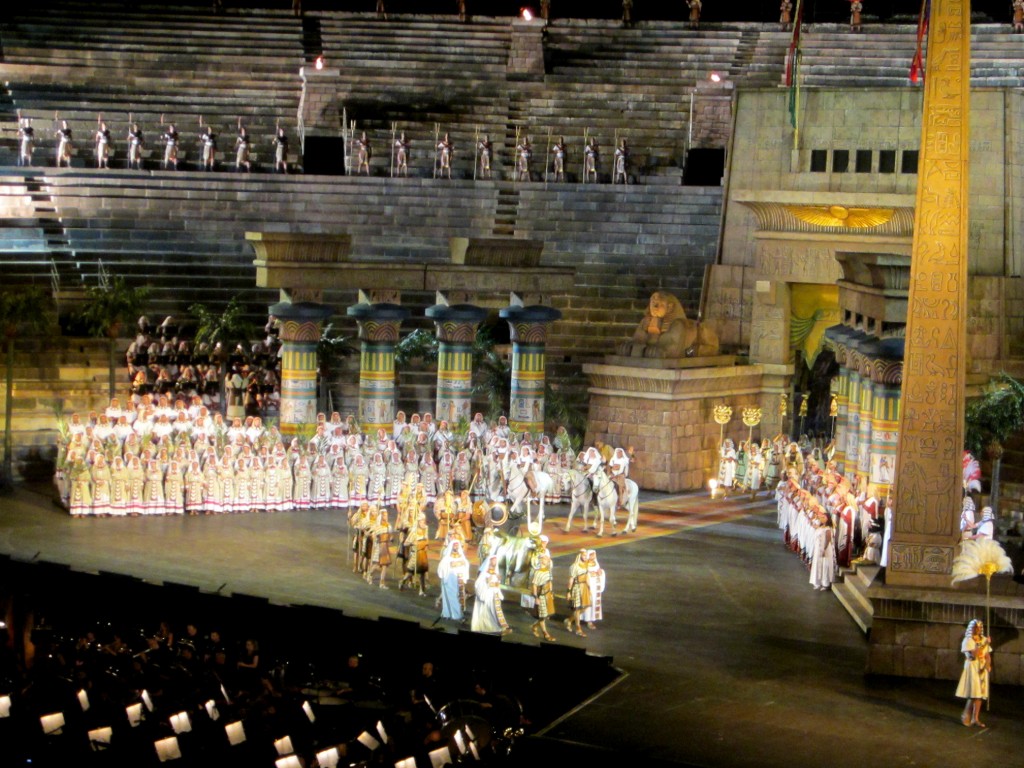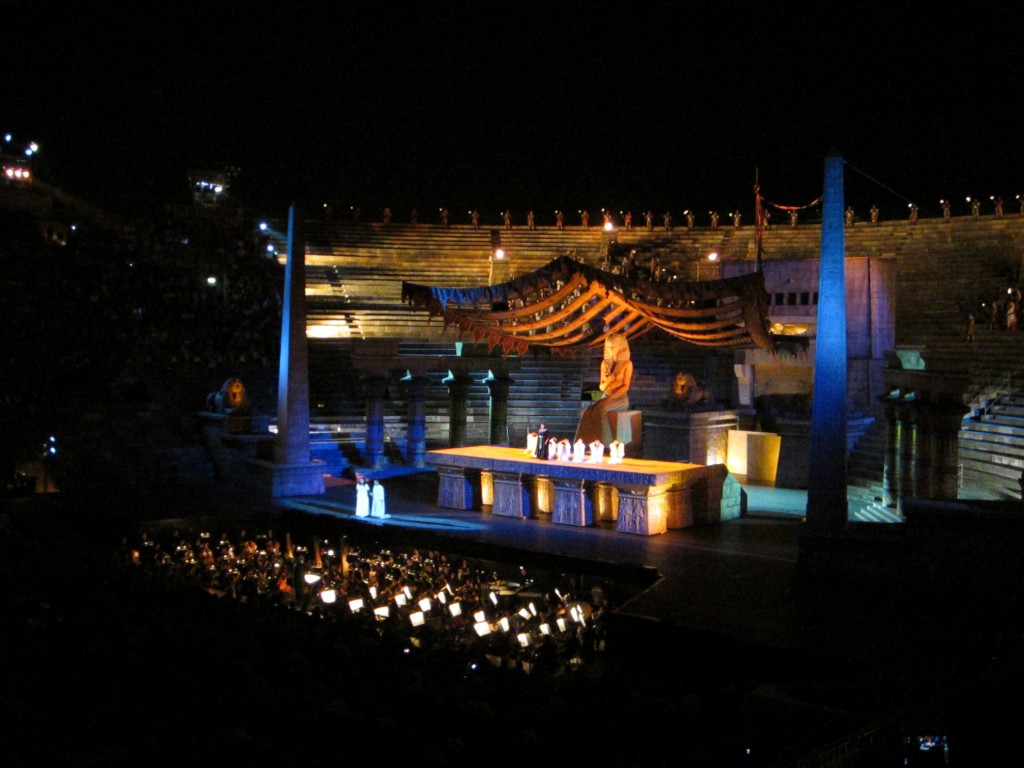Warning: This post is long and has a lot of pics….but it’s AWESOME!!
Eight years ago, almost to the exact date, I visited Siena with my mom on a two week trip to Italy. This is when I learned about Siena’s famed Palio and made a goal to see it for myself someday.
Siena is divided into 17 neighborhoods, or contrade, and each contrada is represented by colors and symbols. Some contrade are allies, while others are fierce enemies! Il Palio is a horse race that occurs bi-annually (July 2 and August 16) in Siena. Ten contrade are chosen at random to compete in each Palio, with the remaining seven being guaranteed a spot in the following years’ race. The Palio is like no other horse race! The jockeys ride bareback and actually, the jockeys don’t really matter at all. It is the horse that wins the race, with…or without…its rider! There is only one rule during the Palio: no sabotaging a horse’s reins. The rest is fair game: bribery, cajoling, pushing, hitting, you name it. But I will get to all of that later!
When my mom and I visited, she bought a scarf from the Tartuca (tortoise) contrada. I was so excited to take this same scarf back to Siena with me, eight years later, and cheer for the tortoise. Slow and steady wins the race, right?!
Today, the day before the race, Siena was filled with elation and anticipation. The talk on everyone’s lips was who would win, who paid how much for each jockey, and how the horses would perform! Every street was proudly displaying the colors, flags, and symbols of its contrada.

Torre (Tower, represented by an elephant) – Onda (Wave, represented by a dolphin) – Oca (Goose, represented by a goose)
Each contrada also has its own church, museum, and fountain.
Everyone gets in the spirit…everyone!
And you know what else is great?! Each contrada proudly walks its horse around Siena the day before the race. The members of the contrada follow the horse around, singing, playing drums, and just celebrating! We just happened to “run into” the Tartuca (tortoise) crowd!
About a week before the Palio, a veterinarian checks all the equine contenders and the ten best prospects are determined. Four days prior to the race, the horses and jockeys are randomly paired. The jockeys have already been selected (and paid heftily) by each contrada. Each horse then moves to the “barn” of his/her assigned contrada and is attended to 24 hours/day…until the Palio. In order for the horse and jockey to get to know one another and prepare for the big day, there are trial races held each day leading up to the Palio.
Joe and I were lucky enough to have a bird’s eye view of the last (and most important) trail race prior to the Palio. It was basically a dress rehearsal.
The Palio takes place on Siena’s main square, Il Campo. The thing is…the Campo isn’t a circle…or even an oval. It is fan shaped…making for an even more interesting race!
The horses walked out from the town hall and prepared to line up between the start ropes.
Umm….someone please tell my tortoise (blue and yellow) that everyone runs the other direction. Good thing this was just a practice race!
And they’re off!! My tortoise (blue and yellow) was in the lead!
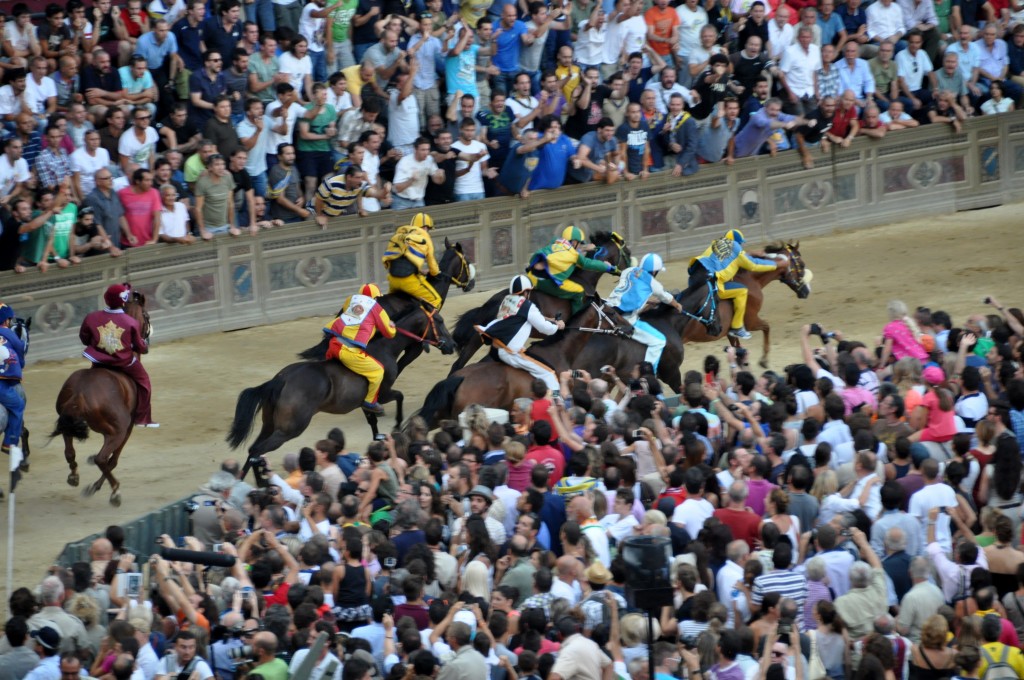 For reasons which I will explain in a minute, Joe was cheering for the Chiocciola (snail), who came in for the win.
For reasons which I will explain in a minute, Joe was cheering for the Chiocciola (snail), who came in for the win.
Winning the practice race is never a good sign, if you ask me. Regardless, it was really exciting watching all of the pomp and circumstance!
After the trial race, the night before the Palio, each contrada hosts a dinner. Basically…the biggest block party you have ever seen! Joe was rooting for the Chiocciola (snail) contrada because that is where we spent the rest of the evening. We came to find out that the Chiocciola (snail) and the Tartuca (tortoise) contrade are actually enemies. Needless to say, I tucked away my tortoise scarf before heading to dinner.
Supposedly, there were 1,300 people dining in the Chiocciola contrada tonight. A different time I heard 1,700. A third time it was 2,000. So, somewhere between 1,300 and 2,000 people were eating dinner together in the streets of this tiny neighborhood! I guess wine consumption and the accuracy of estimations have an inverse relationship!
You would think that feeding that many people out of one kitchen would turn into a never-ending task. I must say, though, that it was quite efficient. Just over 3.5 hours to serve 4 courses to over one thousand people! While we were eating there were speeches from the jockey, the Chiocciola Captian and the Chiocciola President. The jockey also made a lap around the numerous city blocks that the tables filled, escorted by drummers and flags.
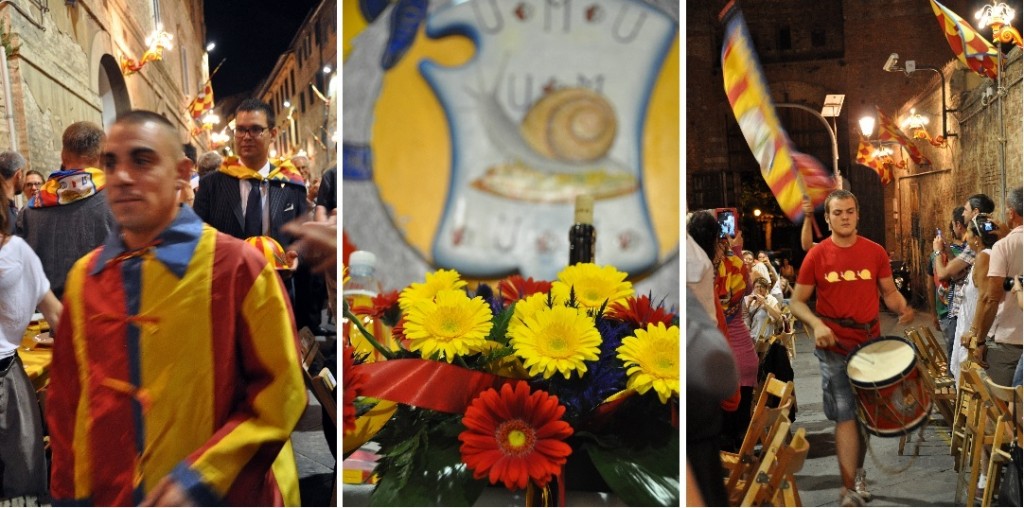
Unfortunately, the jockey is blurry, but check out the servant man who has to follow him and carry the helmet!
Everything was decked out in snails…even the chairs!
It was a great meal, with lots of wine and even a personal meet n’ greet with the jockey! How we ended up in the “Society of the Snail” (contrada club house) with our new Sienese friends, drinking grappa and singing “Brindisino la la la la la” (Italian drinking song) at 1am is still a little hazy…
I can’t wait for tomorrow!


